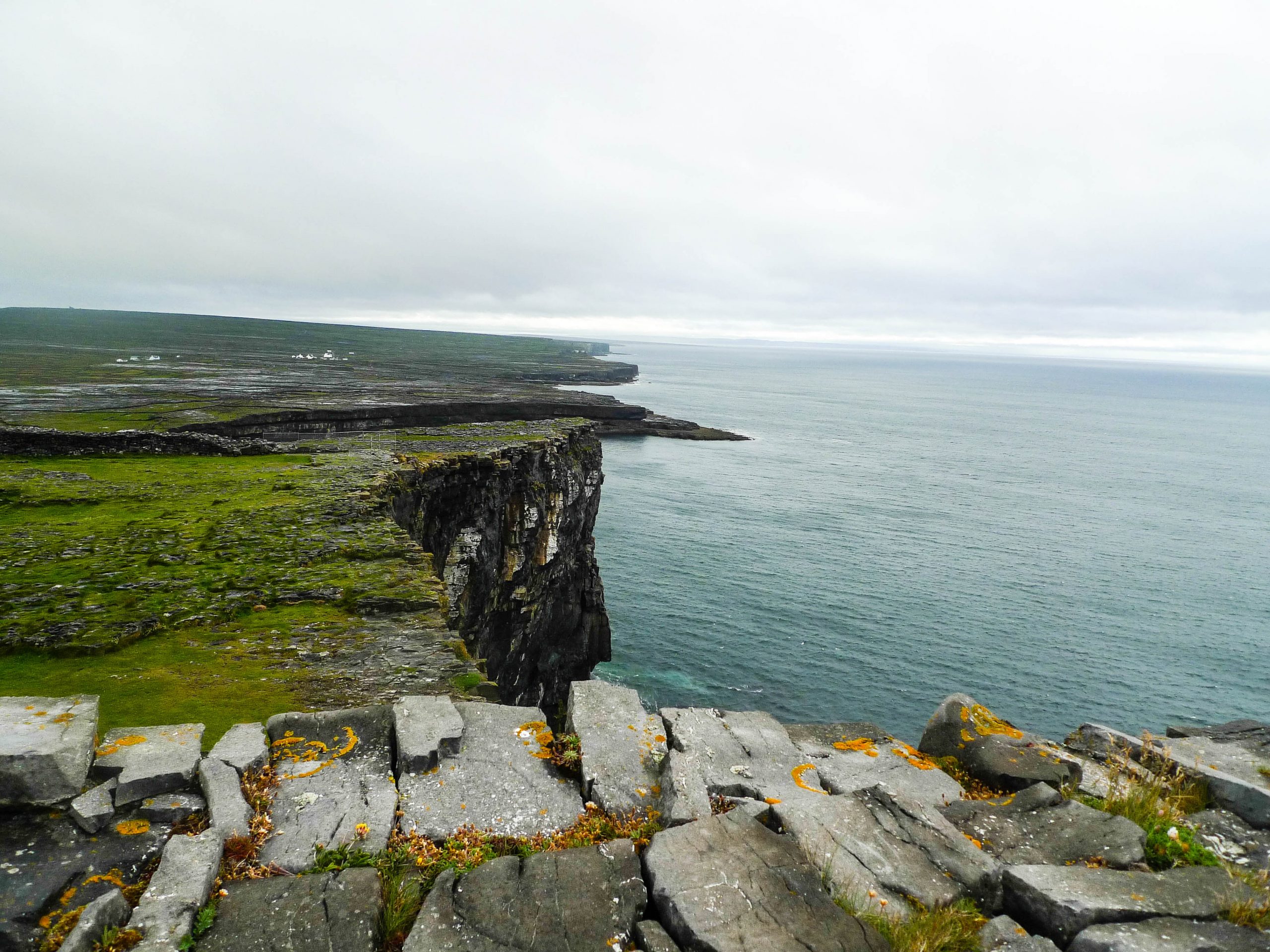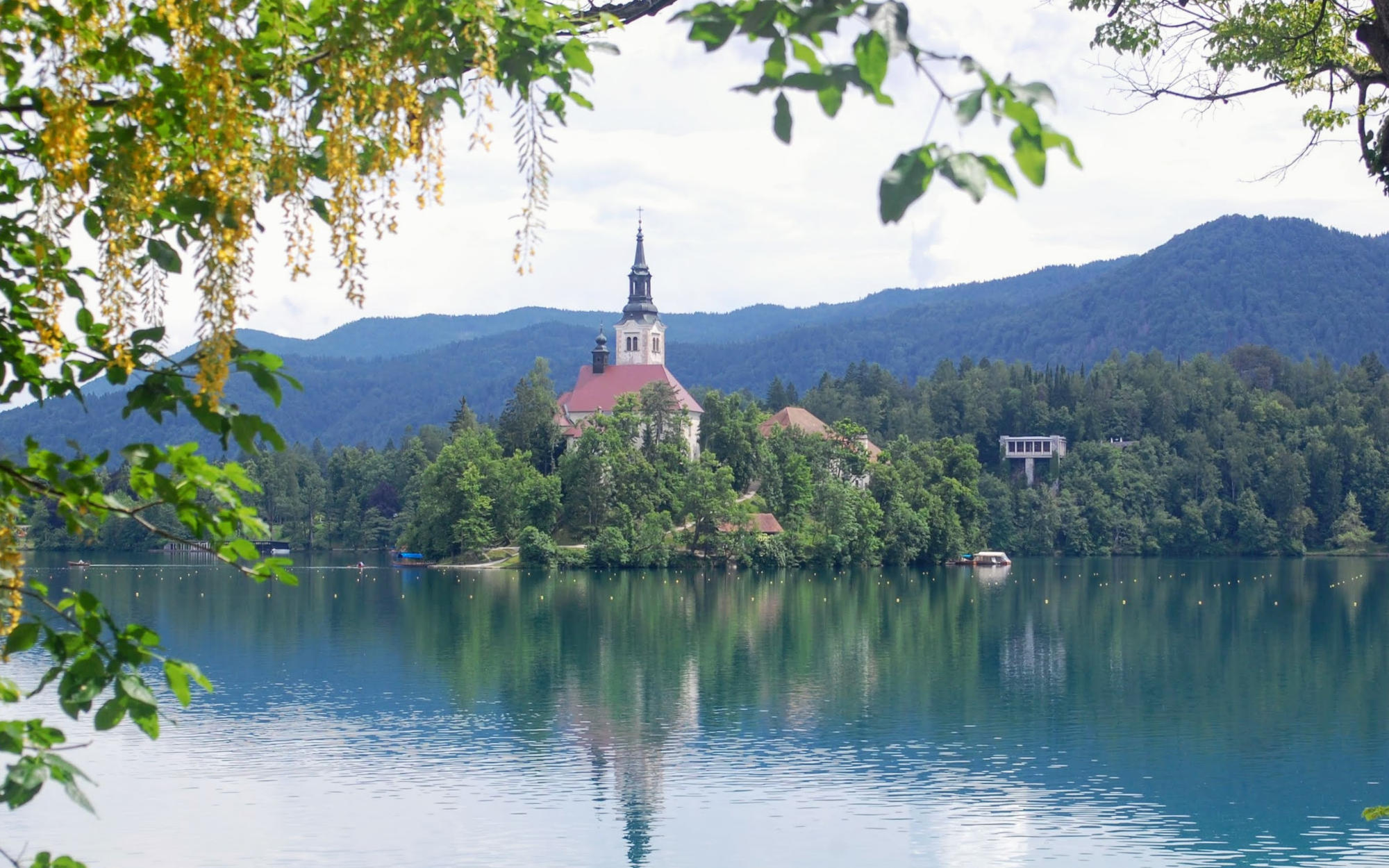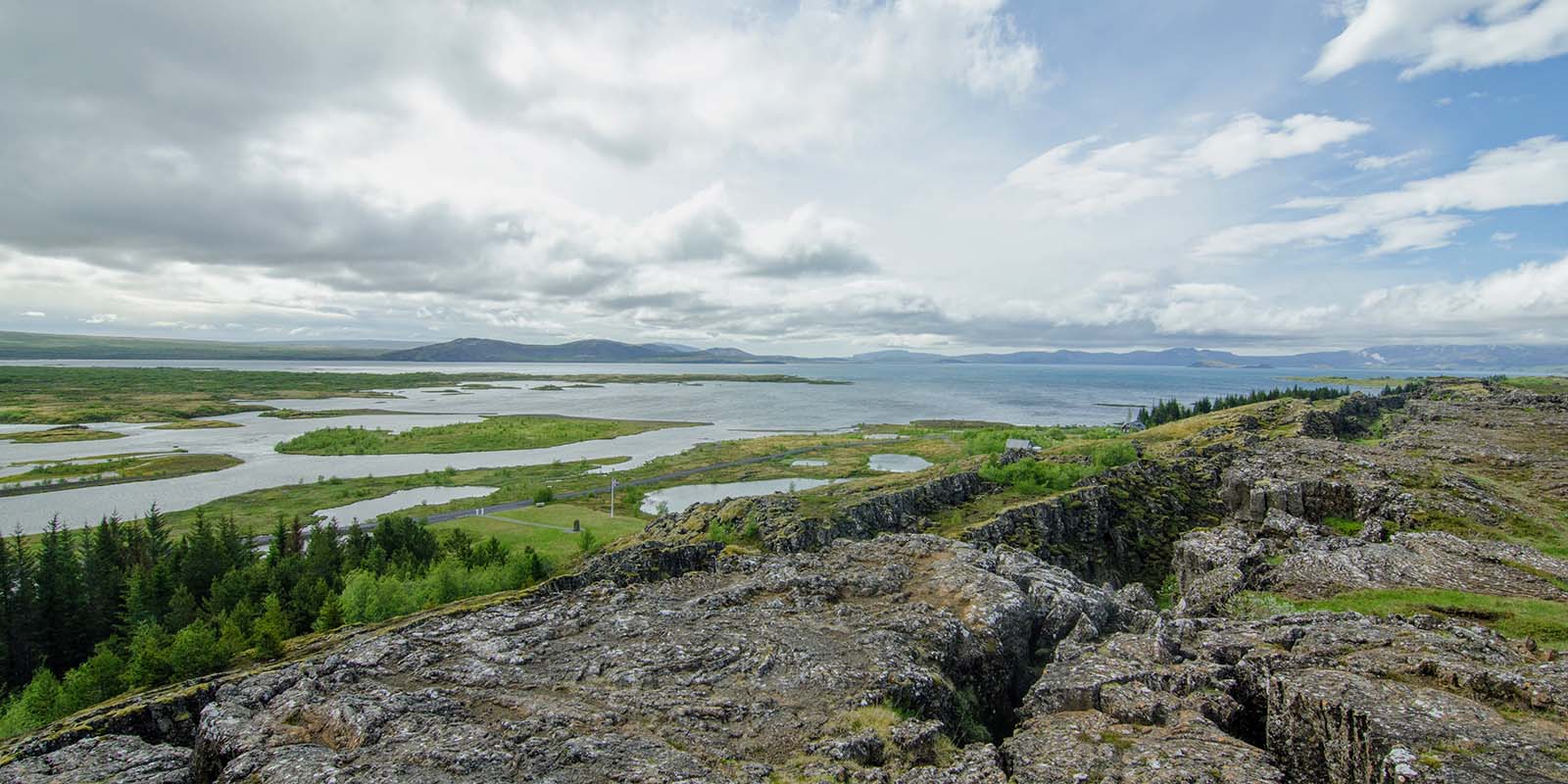Ireland is an incredibly beautiful country with rolling green hills, ruins older than the pyramids, great music and friendly pubs. From the metropolitan city of Dublin to the famous Cliffs of Moher and the recent history of Northern Ireland, you’ll enjoy every minute.
Length: 16 days
Transportation: This is a car based trip. Rent a car at the Dublin airport (more below).
Film Inspiration: The Wind that Shakes the Barley, Derry Girls, ’71, Bloody Sunday, Michael Collins
Best Guide Book: Rick Steves Ireland
Days 1-3 Dublin
Day 1
- Fly into Dublin
- Grab a cab, Airlink bus (cheaper) or Aircoach bus (pricier) to downtown Dublin
- Dublin Historic walking tour (leave from Trinity)
- Trinity library
- National Museum
- Drinks – The Brazen Head or Mulligan’s
- Dinner – L Mulligan Grocer, Variety Jones
- Lodging–Latchfords Apartments, Stauntons on the Green, Brooks Hotel, The Merchant House, or Jury’s Inn Christ Church– or if you’re feeling adventurous, The Avalon House hostel was actually pretty nice (night 1/3)
Day 2
- Traditional Irish Breakfast at O’Neill’s Pub & Kitchen or The Woollen Mills
- Grafton street wander
- Saint Steven’s Green
- Dublin Castle
- Grab a sweet or lunch at Queen of Tarts
- Christchurch Cathedral
- St Patrick’s Cathedral
- Dinner – Delahunt, The Camden Kitchen
- Traditional Irish music pub-crawl or just find a pub offering live music like The Brazen Head
- Lodging–same place (night 2/3)
Day 3
- O’Connell street walk
- GPO Witness history exhibit
- Cab to Kilmainham Gaol
- Epic: The Irish Immigration Museum
- Dinner – The Church
- Lodging–same place (night 3/3)
Day 4 – Head north to Derry
- Drive to Newgrange (39m drive)
- Drive to Derry (2h31 drive)
- Derry walking tour
- Last tour is at 4pm. If you don’t make the tour today, they have multiple times every day.
- Site-see Derry:
- Walk the town walls
- Bogside murals
- Tower Museum Derry
- Drinks – Peadar O’Donnell’s Bar or Walled City Brewery
- Dinner – The Sooty Olive, La Sosta, Pyke ‘n’ Pommes, Primrose Restaurant
- Lodging–Bishops Gate Hotel or Maldron Hotel (night 1/2)
Day 5 – Northern Ireland
- Giant’s causeway (63m drive)
- Bushmills – distillery tour and lunch (6m drive)
- Dunluce castle (6m drive)
- Portrush (11m drive)Barry’s
- Portstewart (7m drive)
- Portstewart Strand – 2 miles of beach and sand dunes
- Ice cream at Morelli’s ice-cream parlour
- Dinner – Harry’s Shack (book ahead)
- Return to Derry (48m)
- Lodging–same place (night 2/2)
Day 6 – To County Mayo
- Bogside history tour
- Glenveagh National Park and Castle (52m drive)
- Drive to Donegal (1h9m drive)
- Drive to Westport (2h9m drive)
- Dinner – Pantry & Corkscrew, An Port Mor, or Helm
- Drink and Music – Matt Molloy’s
Day 7 – To Inishmore
- Kylemore Abbey (52m drive)
- Ferry port at Rossaveal (1h15 drive)
- Boat to Inishmore
- Late lunch at Teach Nan Phaidi or Pier House
- Hike, bike or cab tour of the island
- Dinner – Joe Watty’s Bar
- Lodging — Kilmurvey House (night 1/1)
Day 8 – Dun Aengus then to Galway
- Dun Aengus
- Aran sweater market
- Boat to ferry port at Rossaveal
- Drive to Galway (36m drive)
- Explore Galway (detailed below) or grab a walking tour
- Dinner – Ard Bia
- Live traditional music at Tig Coili
- Lodging — Petra House (night 1/1)
Day 9 – Galway to Dingle
- Drive to the Burren
- Dunguaire Castle (40m drive)
- Poulnabrone Dolmen (1h12 drive)
- Caherconnell Stone Fort (4m drive)
- Cliffs of Moher (1h30 drive)
- Ferry from Killimer to Tarbert (1h drive)
- Dingle (1h30 drive)Optional detour to Conor Pass road
- Dinner – The Boat Yard Restaurant or Doyle’s Seafood Restaurant
- Live traditional music at Courthouse pub
- Lodging —An Capall Dubhl (night 1/2)
Day 10 – Dingle Peninsula
- Dingle peninsula drive (detailed below)
- a wild beach
- Great Blasket Center
- Gallatus Oratory
- Tig Brhic Brewery and Pub microbrewery
- Dinner – Reel Fish and Chips (other options: Lord Baker’s Restaurant, The Chart House, Out of the Blue)
- Post-dinner live music at the Courthouse Pub
- Lodging–same place (night 2/2)
Day 11 – Skellig Islands
- Drive to Portmagee (2h drive, where boat departs from)
- Boat to Skellig Islands
- Explore Skellig Michael
- Drive to Kenmare (1h24 drive)
- Dinner – The Lime Tree Restaurant, No 35, or Packie’s
- Drinks – Crowley’s
- Lodging– Brook Lane Hotel or Sheen Falls Lodge (night 1/1)
Day 12 – Killarney and Kinsale
- Drive to Killarney National Park (43m drive)
- Moll’s gap
- Kissane Sheep Farm
- Killarney National Park
- Drive to Kinsale (1h37 drive)
- Dinner – Fishy Fishy
- Evening ghost walking tour
- Lodging–The Old Presbytery (night 1/1)
Day 13 – Cashel to Kilkenny
- Kinsale Historic Stroll (departs at 9:15)
- Drive to Cashel (1h18 drive)
- Tour Rock of Cashel
- Drive to Kilkenny (49m drive)
- Dinner – Restaurante Rinnucini
- Lodging–Butler Court (night 1/2)
Day 14 – Famine Ship and Waterford day tour
- Drive to New Ross (44m drive)
- Dumbrody famine ship
- Optional detour at Jerpoint Abbey
- House of Waterford Crystal Visitor Center and Factory (25m drive)
- Return to Kilkenny (38m drive)
- Dinner – Anocht or Zuni
- Lodging–same place (night 2/2)
Day 15 – Wicklow Mountains
- Drive to Glendalough (1h17 drive)
- Drive to Powerscourt (32m drive)
- Drive to Dublin (35m drive)
- Lodging–Latchfords Apartments, Stauntons on the Green, Brooks Hotel, The Merchant House, or Jury’s Inn Christ Church– or if you’re feeling adventurous, The Avalon House hostel was actually pretty nice (night 1/1)
Day 16 – Home
- Fly home
Detailed Itinerary
Day 1-3 : Dublin
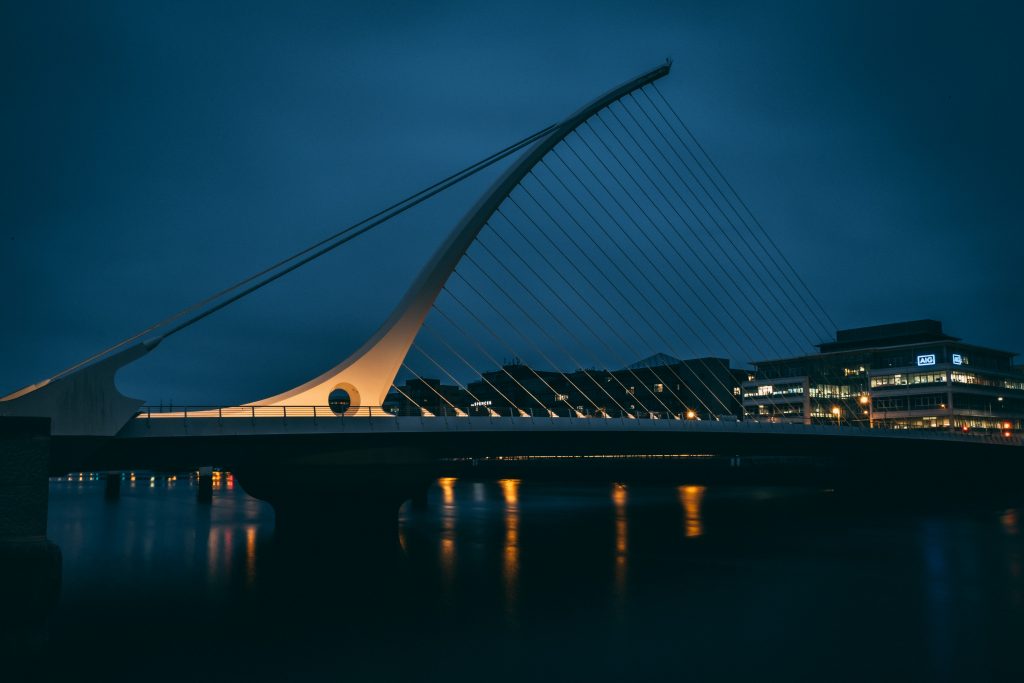
Day 1
Dublin is an easy-to-navigate, compact, walkable city. Our best advice is to use the sights as much as an excuse to wander. Adjust activities and days depending on your arrival time.
You don’t want a car in Dublin – grab an airport bus (Airlink bus (cheaper) or Aircoach bus (pricier)) to (Airline or Aircoach) or taxi (cost-wise, this only makes sense for a group and fast convenience) to downtown Dublin. Take the bus back to the airport when leaving Dublin and pick up your rental car there.
Adjust your activities around what time you get in and how tired you may be after your flight. We arrange the itinerary presuming you’ll arrive in the morning, so adjust accordingly. Nothing in the main part of Dublin except the historic jail is more than about a 30 minute walk so you can choose from the attractions for a schedule that works for you.
Start your first day with the Dublin Historic walking tour which leaves from Trinity’s main gate. Lead by history graduate students, this is a highly entertaining and interesting way to get oriented to the city and see major sites. After your tour head to the beautiful Trinity library with its historic Book of Kells and enjoy the Depending on your energy you could see the other attractions in this part of town including the beautiful trinity library with it’s historic book of Kells, and the National Archaeology Museum with 4000 years of well preserved Irish history (including bog bodies). It’s right across the street from the library.
Grab a pint of Guinness (come on, the country is famous for it) at a historic pub. We recommend either The Brazen Head or Mulligan’s. On that note, we aren’t recommending the tour of Guinness. We love the beer, the tour not so much. Unless you’re really really into commercial beer making, you probably won’t enjoy it (and this comes from people who love breweries).
For dinner consider L Mulligan Grocer or Variety Jones for locally sourced Irish fare.
It’s hard to go wrong with lodging in Dublin since it’s decently small, but if you can, try and stay nearby Temple Bar, the Portobello neighborhood, or Saint Stephen’s Green. Places to consider: Latchfords Apartments, Stauntons on the Green, Brooks Hotel, The Merchant House, or Jury’s Inn Christ Church. If you’re feeling adventurous (or are on a strict budget), The Avalon House hostel was actually pretty nice (night 1/3).
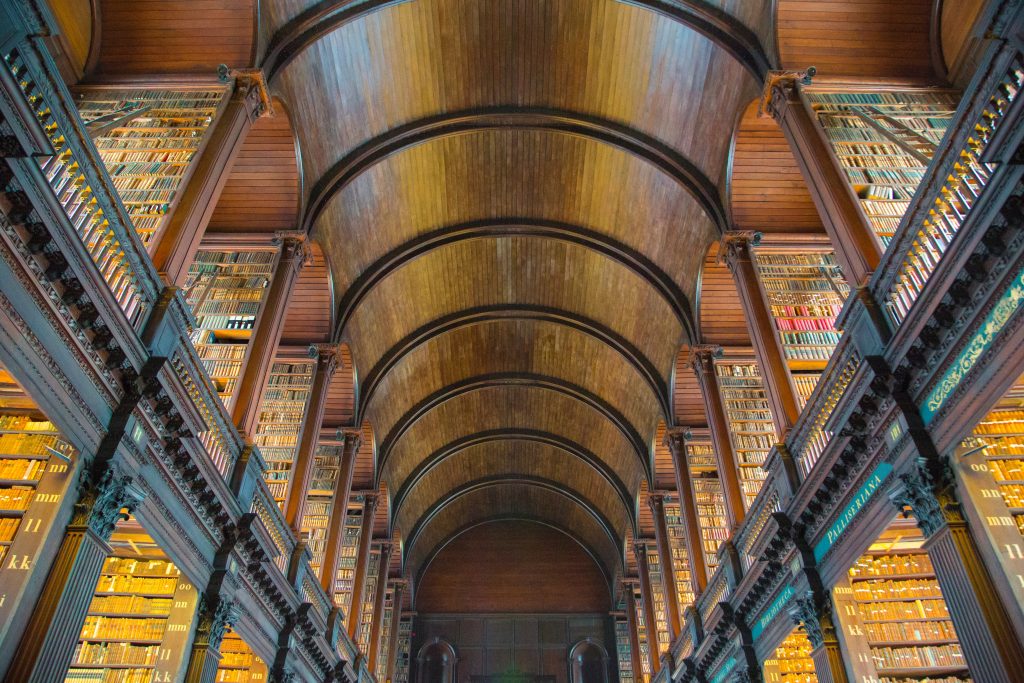
Day 2
You can’t possibly visit Ireland and not have a traditional Irish breakfast. What is a full Irish breakfast? Think bacon, sausages, baked beans, eggs, mushrooms, and grilled tomatoes. At least the first 1-2 times it’s wonderful. After that it’s a bit much. We’re sure you’ll have more opportunities than you want for a full Irish breakfast while in Ireland, but if you want to ensure it, head in the morning to O’Neill’s Pub & Kitchen or The Woollen Mills to partake.
Dublin is a great city for wandering so today consider a walk up Grafton Street (the main pedestrian shopping street) to St Stephen’s Green. St Stephen’s Green is the city’s most famous park. It’s gorgeous and deserves a wander. Wander to the lively Temple Bar area, tour the historic Dublin Castle, grab a sweet or lunch at Queen of Tarts, and visit the two main Cathedrals – St Patrick’s Cathedral and Christchurch Cathedral.
Grab an early (or late) dinner at Delahunt or The Camden Kitchen as this would be a perfect night for your introduction to Irish music. Plan on taking the Irish musical pub crawl tour (leaves at 19:30) or wander around as bars put out signs offering live music sessions (The Brazen Head is a great place for this).
Lodging is the same place (night 2/3).
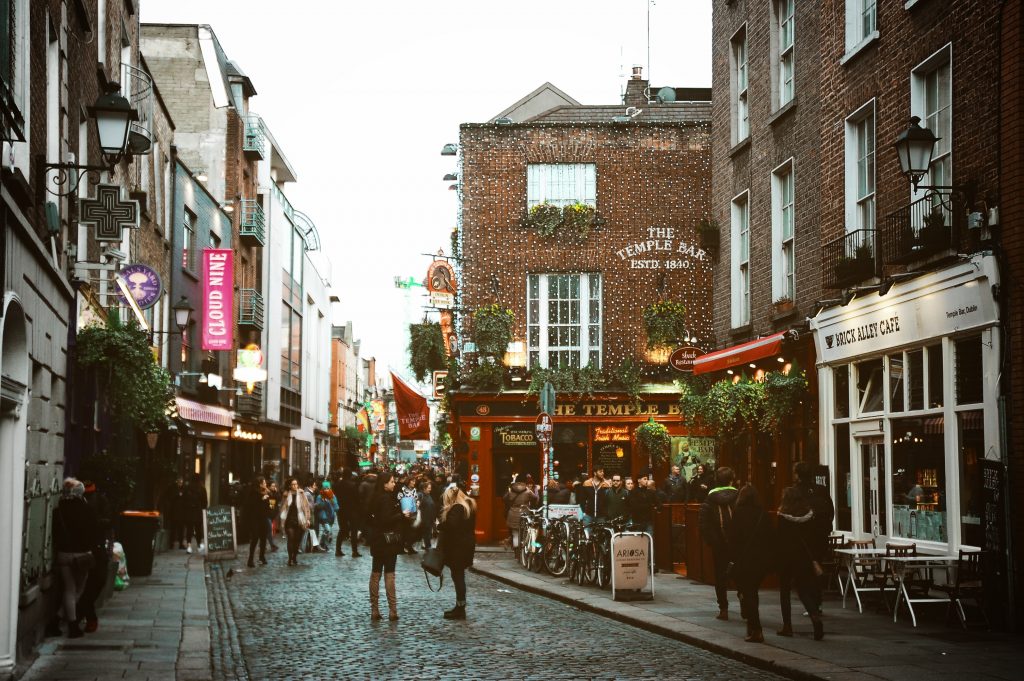
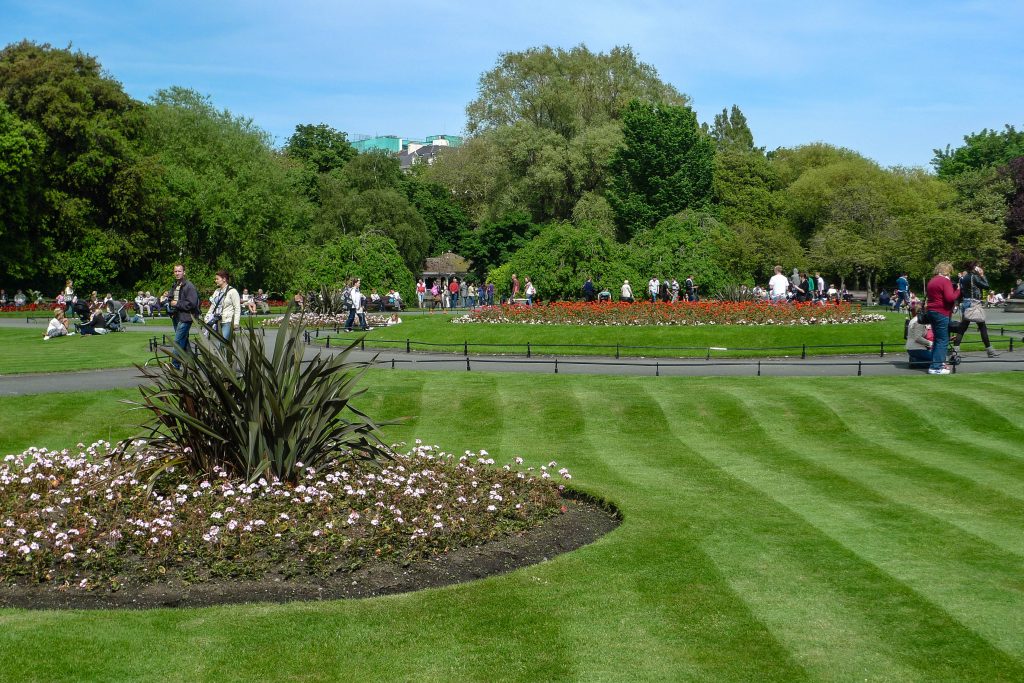
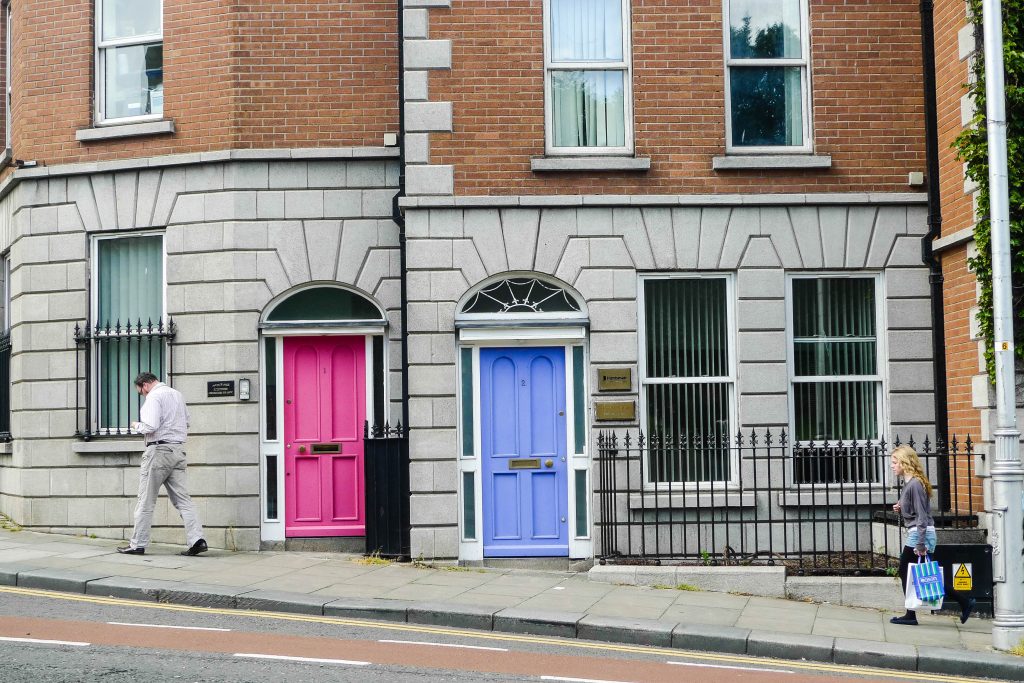
Day 3
Day three is Irish revolution day. Start with a walk down O’Connell street past statues and monuments to Irish history (there’s a good self-guided walking tour in Rick Steves Dublin). Part way down on the left is the General Post Office. Look for bullet holes in the pillars in front – this was where the 1916 Easter Rising was headquartered and was site of a bloody four day siege. Go inside and visit the GPO Witness history exhibit. Continue down the street making your way past monuments to the Garden of Remembrance.
From here grab a cab or bus and follow the path of the rebel leaders out to the Kilmainham Gaol (reserve ahead). The jail will look familiar as it has starred in several prison movies throughout the years but is most important as the site where the British imprisoned (and often executed) Irish republicans. Virtually all of the heroes of Irish history spent time here courtesy of the British. It helps to read up on (or watch a film) about Irish independence before your trip just to put it all in context.
Head back to downtown Dublin. If you have time afterwards consider a visit to Epic: The Irish Immigration Museum on the north shore of the Liffey (convenient to the O’Connell street walk) which tells the story of the Irish diaspora. Head to the The Church Restaurant for dinner, a bar and restaurant set in an old cathedral.
Lodging is the same place (night 2/3).
Day 4 – Head to the north
Entrance to Newgrange Tomb
Start your travels out of Dublin by heading to the remarkable stone age tombs complex at Newgrange 40 minutes or so north of Dublin. This tomb site is 500 years older than the pyramids. It is an impressive site – 250 feet across and 40 feet high, ringed by enormous stones weighing 5 tons, carved with mysterious spirals. As you enter the tomb walk down a 60 foot passageway opening to a central chamber. On the winter solstice light enters through the passageway and illuminates the center of the chamber for 17 minutes. There is another impressive necropolis nearby at Knowth.
From here it is a 2.5 hour, not all that interesting drive to Derry. We suggest trying to get there in time for the 4PM walking tour.
Derry has a unique place in Irish (well, Northern Irish) history. It sits atop a hill with the only intact town wall on the island of Ireland. It has long been a center of strife between the Unionists (Protestants – tied to England) and Republicans (Catholics – tied to the Republic of Ireland). There is no better place to understand the troubled recent history of Ireland vs England than Derry. Stand in Bogside (formerly the poor Catholic area), stare up at the walls of the Protestant city and you get a visceral appreciation of the differences that led to the troubles. There are a couple of essential tours in Derry – do the Derry walking tour today and try and do the Bogside tour on day 6. The last Derry walking tour of the day is at 4pm, so plan your day accordingly to try and partake.
Make sure you walk the town walls, see the Bogside murals, and with extra time visit the Tower Museum of Derry. This museum is set within a replica of a 16th century tower house. The 5th floor offers a great view. You can enjoy both an Armada Shipwreck exhibition as well as the Story of Derry which explains the city’s full history.
For dinner select from The Sooty Olive, La Sosta, Pyke ‘n’ Pommes, or Primrose Restaurant.
For post-dinner drinks head to Peadar O’Donnell’s Bar or Walled City Brewery. The former offering traditional-music sessions every night and the latter offering craft brews.
Consider staying inside the walls at the Bishop’s Gate Hotel or Maldron Hotel (night 1/2).
Day 5 – Northern Ireland
Today jump in the car and head to the UNESCO world heritage site of the Giant’s Causeway, an easy hour’s drive from Derry. This is a truly impressive natural wonder. There are a series of walks in the area getting you down to the Causeway or you can opt to take a shuttle bus. Expect to spend an hour exploring the area.
After that head to the Bushmills Distillery just 6 minutes away. Bushmills claims to be the worlds oldest distillery and provides a highly interesting tour (best when the distillery is active during the week). You can also enjoy a decent lunch here.
From here head along the Antrim coast to Dunluce castle – right on the cliff and very scenic. The ruins perch directly over the sea, which while pretty, was not very practical as one night in 1639 half of the kitchen fell into the sea. You can pay to tour but there’s not much to see inside. If you’re a Game of Thrones fan you’ll recognize this as Castle Greyjoy. This was also the castle that was said to have inspired CS Lewis when he was creating Narnia. If you have a lot of time and want a long walk, you can walk one hour each way along the coastal path to Portrush (your next stop).
Next stop is Portrush, a resort from the late 1800’s with a gentile seaside vibe. There’s an old time amusement arcade, Barry’s which is a fun stop and a lot of choices for places to eat/stay. However it can get very touristy, especially in the summer, so a quick 7 minute drive further down the road gets you to Portstewart. Portstewart has a beautiful 2 miles of beach and sand dunes and a charming town. Have an ice cream from Morelli’s ice-cream parlour while wandering the beach. For dinner head to the extremely popular Harry’s Shack (make sure to book ahead).
While you can stay in either of these sea-side towns, you will have a longer driving day tomorrow. We recommend just heading back to Derry. From here it’s about an hour drive back.
Lodging at the same place (night 2/2).
Day 6 – Derry to County Mayo
There’s a bit of driving today but it can be broken up a bit and is fairly easy. We’d consider sleeping in, and then starting your morning with the Bogside History Tour at 11. And side note, before you go watch the docudrama Bloody Sunday. This does not make for an early start but it stays light late if you’re traveling in the late spring or summer and hopefully you should have enough time. Another great option would be to call/email and see if you can get an earlier private time. Also depending on when you arrive to Derry the first day you could maybe squeeze this tour in along with the Derry Walking Tour the first day.
From here head about an hour to to Glenveagh National Park and Castle. There are a couple of possible diversions along the way (Grianan Aileach Ring and Newmills corn and flax mills), but we’d skip them in favor of a less hectic day and more time at Glenveagh. This is a spectacular park located along a loch with a gorgeous country estate built in 1873 filled with fine art and furniture and lovely gardens. If you have time and inclination there are also hiking trails in the park.
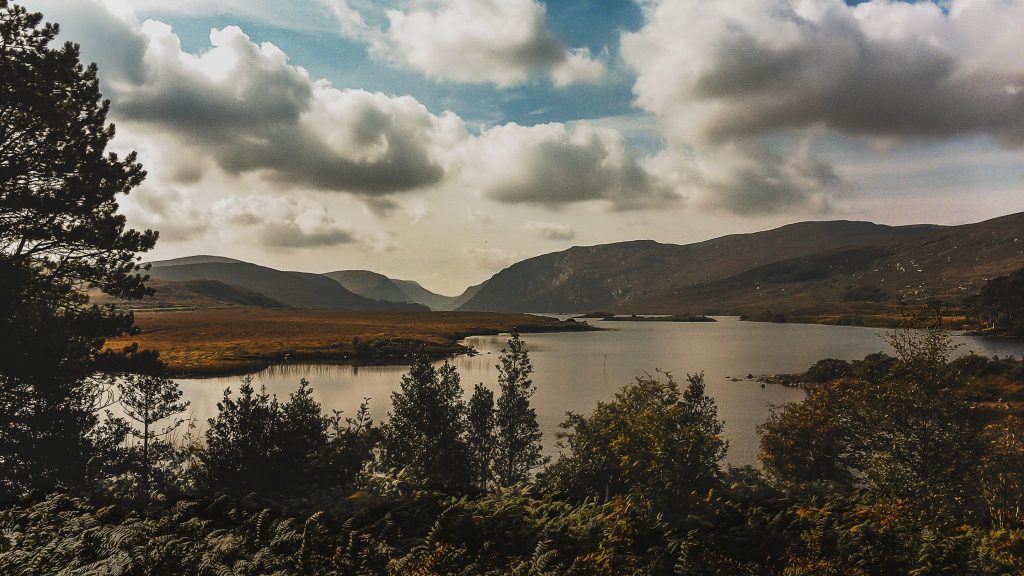
Leave Glenveagh and head south toward Westport. Along the way Donegal town makes a convenient stop and has a nice main square lined with shops and restaurants. There is also an interesting reconstructed castle in the center of town. Continuing on you will arrive at Westport after about another 2 hours from Donegal, which makes a pleasant stop with an attractive town and good lodging and eating choices.
For dinner check out Pantry & Corkscrew, An Port Mor, or Helm.
After dinner head to the famous Matt Molloy’s, an old-school pub for a traditional music held every night.
With an extra day consider the very scenic and popular 26 mile Great Western Greenway bike trip (bike rental places will shuttle you to Achill Island from where you will bike back to Westport).
Stay in Westport at the Clew Bay Hotel, Mill Times Hotel, or Boulevard Guesthouse (night 1/1).
Day 7 – To Inishmore
There is some beautiful driving through Connemara today and we suggest you make the 1PM ferry from Rossaveal (about a 2h15 drive) to have more time on Inishmore, so get an early start. Connemara is a rocky wilderness area of north west Ireland, surrounded by the Atlantic’s coast. It has beautiful mountains, peat lakes, and crumbling stone walls criss crossing fields.
Take n59 toward Leenane, passing Aasleagh falls. About 8km Past Leenane you’ll see place with a cut in the peat bog. It’s an interesting place to get out and walk onto the squishy bog carpet. Continue along to Kylemore Abbey, a neogothic country house built in the 1860’s. It later became a boarding school run by benedictine nuns until it closed in 2010. You can visit some open rooms downstairs (nuns still live upstairs). The main reason to visit however is a view from the lakeshore and possibly a stroll through the gardens.
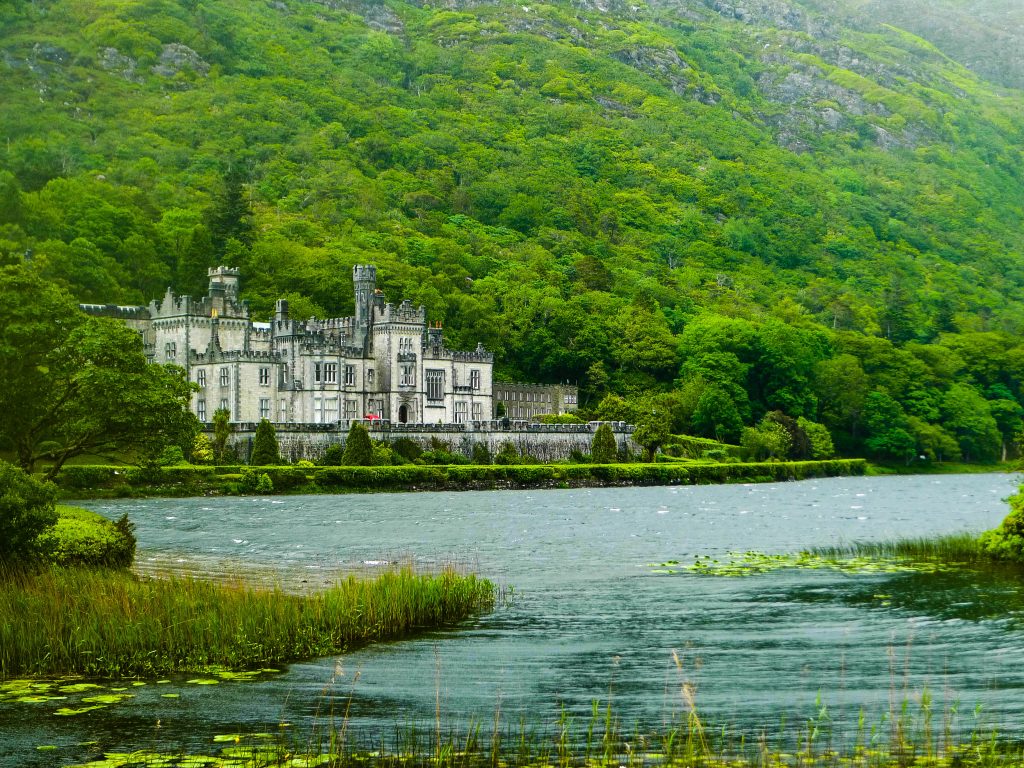
From here head south through the wild and scenic countryside of the Maam valley to the ferry port at Rossaveal. Grab the 1pm ferry (get reservations in advance). You’ll leave your car parked at the terminal (no cars allowed on the ferry). It takes about 45 minutes to get to the only real town on the island – Kilronan.
On arrival grab enjoy a tour of the island take a walk, or rent a bike. It’s easy to get around the island by cab (or pony carriage or bicycle or mini bus). You can pick up all of these options from Kilronan and you can see most thing within an hour’s walk. Afterwards or during grab a late lunch at Teach Nan Phaidi in Kilmurvey (open 11am-5PM). If you’re hungry on arrival you can also head to the Pier House right near the ferry terminal. The whole island is a patchwork of small green fields surrounded by rock walls. Life here was hard – the islands were solid limestone with no dirt. The dirt was made by manually hauling sand and seaweed and layering it on top of the rock. Despite the hardships there have been people living here for over 2000 years. The island is an area where most of the population still speaks Irish as their first language.
For dinner you’ll probably want to eat in Kilronan. Either have a late lunch/early dinner at Teach Nan Phaidi or head to Joe Watty’s Bar and maybe enjoy some live music while you’re at it.
For lodging, stay at Kilmurvey House.
Day 8 – Dun Aengus then to Galway
Dun Aengus is an impressive, semicircular stone fort that abuts a 300-foot sheer cliff above the Atlantic. The initial walls of this ring fort — one of seven to be found on the islands — date back to 1100 B.C. Staying at Kilmurvey House you are a short walk up to the fort. If you go early you may have the whole place to yourself. We were joined by a friendly dog at the entrance who accompanied us on our entire tour (perhaps he worked for the land trust?). The setting is really spectacular as sea birds soar below you and waves crash into the cliff below. It is one of 7 ring forts on the Aran Islands and is the most impressive in both size and setting.
After you visit grab a cab back to Kilronan and stop by the Aran sweater market, the home of the famous historical Aran wool sweaters. Take the noon ore early afternoon boat back to Rossaveal, pick up your car, and make your way to Galway (36m drive).
Galway is an enjoyable town to wander around, has a good music scene and offers nice food and lodging. Start at Eyre square, walk down Williams gate to Lynch’s castle, a 15th century fortified townhouse. From here walk to the collegiate church of St Nicholas (1320). On most Saturdays there is an open air market around the church. Down the road on the right you come to a glass wall showing an excavation of a Norman hall from the 13th century. As you continue to the Wolfe Tome bridge you will see the Columbus monument given to the city by the Italian city of Genoa to commemorate Columbus visit here in 1477. Don’t cross the bridge but turn left and had to the Spanish Arch – the best remaining part of the old town wall and named for the place Spanish ships unloaded their cargos. The free city museum is nearby. If you want a bit more color to your Galway exploration consider a walking tour.
Get dinner at Ard Bia; consider the music and pub scene at Tig Coili.
Stay at Petra House (night 1/1).
Day 9 – Galway to Dingle
Today is a long driving day but there are lots of sights and stops along the way. Bid farewell to Galway and head south to the Burren (40m drive). The Burren is an ecologically unique landscape comprised of a 10 mile square limestone plateau. It’s scattered with ancient stone forts. Take the N67 south from Galway past Dunguaire Castle in Kinvarra (home to a pricey medieval banquet), Poulnabrone Dolmen (which is a portal tomb but looks like a stone table) then to Caherconnell Stone Fort. As you wander out on the rocks, keep your eyes open for the unique plants and flowers growing in cracks.
From the stone fort head to the Cliffs of Moher – one of Ireland’s blockbuster natural sights (1h30 drive). The cliffs run 5 miles along, soaring at heights of up to 650 feet and plunging to a sheer drop into the ocean far below. Stop at the visitor center for orientation and then head out on a hike along the top of the cliffs. If you head to the right about 5 minutes, you’ll come upon O’Brien’s Tower – the highest point on the cliffs (don’t bother paying to go in and climb).
From the cliffs head south to the ferry terminal at Killimer (find the timetable here). Catch the car ferry from Killimer to Tarbert (which is slower than going by highway through Limerick but more scenic and 80 miles shorter). Alternatively, if you have additional time, you could detour to the Craggaunowen Folk Museum near Ennis which has reproductions of a fortified Iron age thatched roof dwelling on a small man-made island. But, given today’s driving is so long, we’d recommend going straight to the south and taking the ferry instead.
From here you will head south to Tralee which is a relatively pretty town with the Kerry County Museum – which is pretty well done, and can make a nice stop if you need a break. From here you can head to Dingle Town (1h30 drive) by the easy and quick N-86, or the decidedly NOT easy or quick but spectacular Conor Pass road (very steep and narrow). If you take the Conor Pass road, stop at the top at the waterfall and scramble 5 minutes to a glacier created lake. The views back to Tralee and down to Dingle Town are great from the pass. From here head into Dingle, one of the best towns in all of Ireland.
Dingle is a small and beautiful town in the southwest of Ireland along the Atlantic Coast. It offers history from the time of the Norman Invasion, great food and live music, and is one of the most popular place for the Irish to head on holiday.
For dinner, head to The Boat Yard Restaurant or Doyle’s Seafood Restaurant for some unbeatable seafood.
Dingle has some of the best live music in Ireland. Don’t miss out hitting a pub at night, especially our favorite – the Courthouse pub.
For lodging, stay at An Capall Dubh (night 1/3).
Day 10 – Dingle Peninsula
Today you will do the very beautiful Dingle Peninsula drive. It’s only 45km (the more famous Ring of Kerry is 135 miles (217 km)), but plan for the better part of a day and take your time. The Ring of Kerry is full of giant tour busses. The Dingle Peninsula has none of them (the road is too small). If you choose one, we’d skip the Ring and do Dingle instead for a more off-the-beaten-path and local experience. You can also go by a guided minibus tour but it’s very easy to do on your own. Take lots of stops along the way to visit the stone age monuments. Highlights of the trip include – in addition to the amazing scenery – a lovely wild beach (about 1 km before the Great Blasket Center, turn off for trail down to the beach), the Great Blasket Center, Gallatus Oratory, Tig Bhric Brewery and Pub (a delightful microbrewery), and a high likelihood of being stopped in your tracks by sheep.
Upon your return to Dingle, stop by Murphys Ice Cream on Strand Street.
Grab a casual dinner at Reel Fish and Chips, our favorite dining spot in Dingle. If fish and chips aren’t your style, head to Lord Baker’s Restaurant, The Chart House, or Out of the Blue instead.
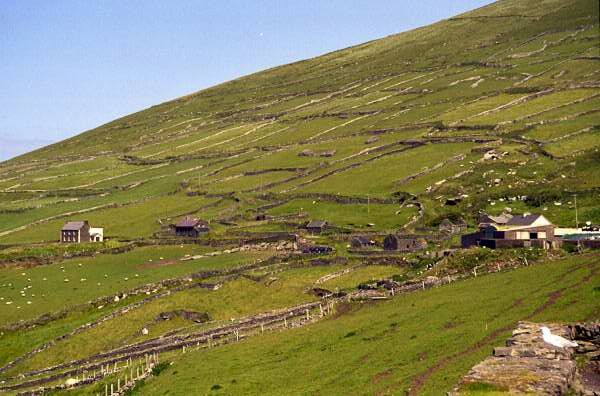
Don’t miss live music again tonight. While you can stumble upon one of the other many venues, we recommend you head back to the Courthouse Pub for a second night.
Lodging is the same place (night 2/2).
Day 11 – Skellig Islands
You cannot miss the Skellig Islands.
Yes, it is a bit of a drive to get to the Portmaggee (allow 2 hours). And you are boarding an unbelievably tiny boat in possibly big seas. And it’s a 1-1.5 hour boat trip to get out there. And you need to book WAY in advance. But, again, you cannot miss this – it is one of the coolest places we’ve ever been and easily one of the coolest places in the whole world. Unfortunately since Star Was VIII (Luke Skywalker’s Jedi temple was the island) it has been discovered – but don’t let that deter you. Plan ahead – they still only let 180 people a day visit.
What are the Skellig Islands? A set of islands off the coast of Ireland, the larger island, Skellig Michael is a A UNESCO world heritage site. This island was inhabited by Christian Monks from the 6th to 12th century. Dizzyingly high, the monastic buildings perch 150 meters above sea level.
The Islands are visible from the Dingle peninsula and look far out to sea. From the port, climb into a tiny boat and head out. If the sea is calm you’re in luck, if not it’s an interesting ride (trust us). If too rough they won’t go out (call ahead the morning of your trip). Trips usually leave at 10 am from Portmaggee – a pretty easy 2 hour drive from Dingle. After 1-1.5 hours you’ll dock at Skellig Michael.
Once you get to Skellig Michael island jump off the boat onto the platform and head up 600-or-so feet on 1000 year old steps to the ancient monastery at the top – active for 500 years starting around 500 – because, well, I guess life was just too cosmopolitan on the mainland in 500. The scenery is unbelievably beautiful and otherworldly (which is why Star Wars selected it). As you climb you’re surrounded by thousands of native puffins who live around and under the stairs (unable to eliminate them, Star Wars actually CGI’d then into little critters). You’ll get to enjoy the puffins hunkering down right next to you and observe the magnificent (and threatened because of climate change) birds fully. Head straight up for a 20 minute talk by the Land Trust Naturalist who lives on the Island during the tourist season as caretaker. You’ll have 2.5 hours on the island before it’s time to head back – past Little Skellig with thousands of sea birds circling. Bring a picnic lunch to enjoy on the island. There are no toilets on the island – factor that in. It’s 2-3 hours of boat ride plus 2.5 hours on the island all without a toilet.
After you return to Portmagee, drive to Kenmare (1h24 drive). Kenmare is an attractive town with colorful buildings and great amenities. While a local tourist hub, it maintains all its charm. There are three main streets you can wander with fun shops and great dining options. There is a nearby Bronze Age stone circle if you have extra time.
For dinner, head to The Lime Tree Restaurant or No 35. Head to Crowley’s afterward for a pint.
Stay at the Brook Lane Hotel or Sheen Falls Lodge (slightly further from town). Or for a big splurge you can check out the Park Hotel Kenmare (night 1/1).
Day 12 – Kenmare (or Dingle) to Killarney to Kinsale
Start with an easy drive to Killarney National Park. Along the way, drive over Moll’s Gap and stop at Kissane Sheep Farm for an impressive border collie sheep show (seriously it’s great). From here the scenery becomes even more beautiful as you head through the National Park. There are several interesting things nearby in Killarney National Park worth a stop: Muckross House, Torc Waterfall, Ross Castle, and Muckross farm.
From Killarney head to Kinsale (1h37 drive). Kinsale is an attractive port town on the south shore of Ireland that is a pleasant place to stay in and wander. Enjoy the narrow, winding streets filled with galleries and shops, the great food and drink scene, and the towering 17th century fortress.
For dinner, head to the award winning Fishy Fishy.
In the evening, take the ghost walking tour (for some comedic relief).
Stay at The Old Presbytery (night 1/1).
Day 13 – Kinsale to Cashel to Kilkenny
After breakfast, head to the TI to join Don and Barry for the entertaining 1.5 hour Kinsale Historic Stroll to learn about the history and familiarize yourself with the town. Tours leave at both 9:15 and 11:15 during peak season.
Depart Kinsale and make your way to the town of Cashel (1h18 drive). Park and walk up the hill and tour the amazing ruins at the Rock of Cashel.
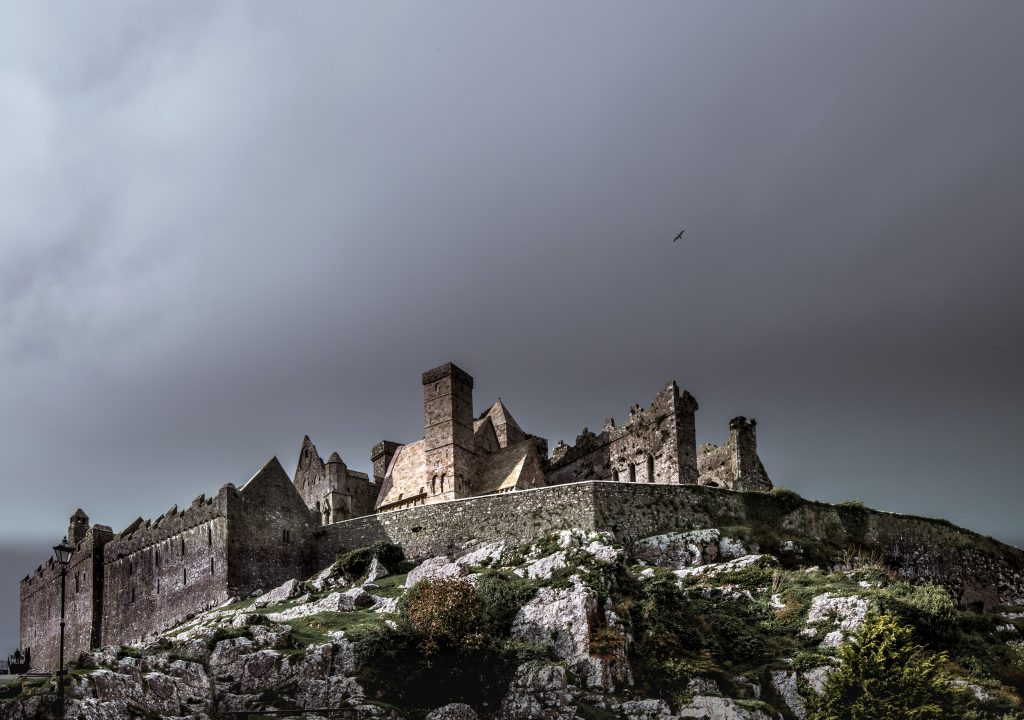
From Cashel it’s a relatively short drive to to the pretty little medieval town of Kilkenny (49m drive) where you will spend two nights. We recommend the Butler Court for lodging.
Kilkenny has a historic castle, Rothe House which is a well-preserved medieval merchant’s house; and 13th century St. Canice’s Cathedral all of which you can spend your afternoon exploring.
For dinner, take a break from Irish and head to the award-winning and immensely popular Restaurante Rinnucini.
Stay at Butler Court (night 1/2).
Day 14 – Kenmare to Famine ship and Waterford day tour
Head south today for a visit to county Wexford. First drive to New Ross to the Dunbrody Famine Ship. If you haven’t had enough scenic ruins yet, you could consider a detour at Jerpoint Abbey ruins (take a guided tour of the interesting stone carvings). The Dunbrody Famine Ship is a full scale reconstruction of a ship that ported thousands of Irish immigrants to the US. It’s permanently moored on a river in the tiny port of New Ross and offers a sense of hardships endured by emigrants to the US during the potato famine.
From here it’s less than a half hour to Waterford, the oldest town in Ireland which was founded by Vikings at a time when the rest of the country was comprised of villages and monastic settlements. In town there are three museums that tell the story of the town – Reginald’s Tower with artifacts from the Viking era, Chorister’ Hall Medieval Museum, and the Bishops Palace with history from the 1700’s and the world’s largest collection of old Waterford glass. But the big attraction here is the Waterford Crystal Visitor Center so grab the 90 minute tour to learn how this world-famous craft is made.
From here it’s a quick 38 minute drive back to Kilkenney via expressway.
For dinner head to Anocht or Zuni.
Lodging is the same place (night 2/2).
Day 15 – Wicklow Mountains
Today head out of Kilkenny to the Wicklow mountains and Glengdalough, one of Ireland’s mots impressive monastic settlements, active from its founding by St Kevin in the sixth century until destruction by Cromwell in 1398. The setting is lovely with a couple of scenic lakes perfect for strolling. Continue onto Sally’s Gap and it’s remarkable, quintessential Wicklow scenery.
From here head to the beautiful Powerscourt gardens, the finest in Ireland. The gardens cover 47 ares of the 700 acre estate – take the 1 hour walk (which takes about 30 minutes).
From here it is only 35 minutes back to Dublin, where you’ll spend your last night. Select from one of the lodging options of the first night (night 1/1).
Day 16 – Home
The next day, catch a flight home (or to your next destination).

